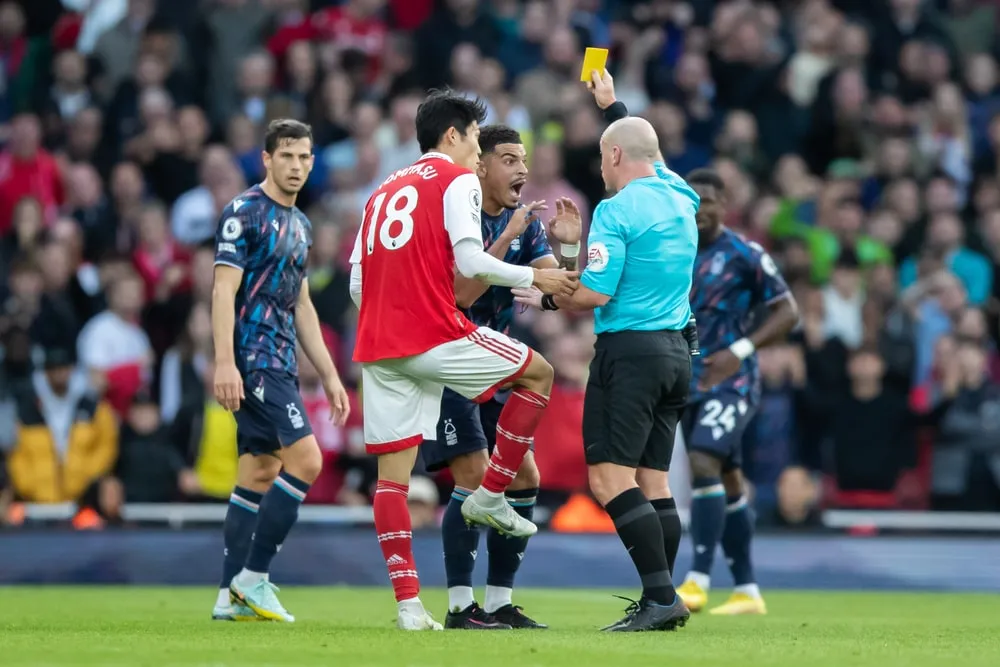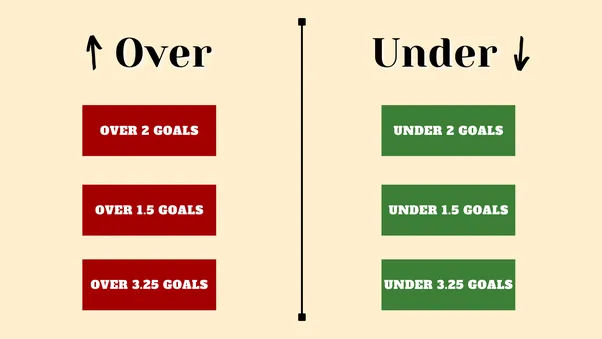Football, also known as soccer in some parts of the world, is a sport loved and followed by millions of people globally. It is a game that brings together people from different backgrounds, cultures, and nationalities, united by their love for the sport. And just like any other sport, football has rules and regulations that players must abide by to maintain fairness and order in the game.
One of the most common terms in football is the “yellow card.” It is an action taken by the match referee to caution or warn a player for unsportsmanlike behavior or committing a foul. But what exactly does a yellow card mean in football? In this article, we will delve deeper into the meaning of yellow card in football, its history, and its significance in the game.

History of Yellow Card in Football
Before we dive into the meaning of yellow card in football, it is essential to understand the history and evolution of this disciplinary measure. The concept of using cards as a warning in football was introduced in 1966 by English schoolteacher Ken Aston. During the World Cup in England, Aston became frustrated with players constantly arguing and questioning his decisions on the field. He came up with the idea of using colored cards to communicate with players without disrupting the flow of the game.
Initially, only one type of card was used – red. However, in 1970, yellow cards were introduced as a mild warning for players who committed minor offenses. Since then, the use of yellow cards has become a standard practice in football, with slight variations in different leagues and competitions worldwide.
Reasons for Receiving a Yellow Card
A yellow card is issued to a player when they commit a foul or exhibit unsportsmanlike behavior on the field. Here are some common reasons why a player may receive a yellow card:
1. Fouls
In football, a foul is an illegal action committed by a player against an opponent or the game’s rules. A player may receive a yellow card if they commit any of the following fouls:
- Dangerous play: when a player uses excessive force or endangers an opponent while attempting to control the ball.
- Reckless tackling: when a player tackles an opponent without caution, causing them to fall or be injured.
- Persistent fouling: when a player consistently commits fouls throughout the game.
- Dissent: when a player shows disrespect towards the referee or their decisions through words or actions.
- Delaying the restart of play: when a player deliberately slows down the game to waste time.
- Unsporting behavior: when a player behaves in an unsportsmanlike manner, such as diving or feigning injury to deceive the referee.
2. Time-wasting
Time-wasting is a common tactic used by players and teams to gain an advantage or secure a win. It involves deliberately slowing down the game to waste precious minutes on the clock. If a player is deemed to be wasting time, the referee may show them a yellow card to warn them against using this tactic.
3. Accumulation of Fouls
In some leagues and competitions, players are allowed a certain number of fouls before receiving a yellow card. For example, in the English Premier League, a player can commit four fouls before being shown a yellow card. This rule aims to prevent players from receiving a yellow card for their first offense, giving them a chance to rectify their actions.
How is a Yellow Card Shown?
Now that we know why a player may receive a yellow card let’s look at how it is shown on the field. When a player commits a foul or exhibits unsportsmanlike behavior, the referee will take out a yellow card from their pocket and show it to the player. The referee will then write down the player’s name in their notebook to keep a record of the warning.
In some instances, the referee may also show a yellow card to a team’s coach or bench players for misconduct or unsportsmanlike behavior. This happens when the coach or bench players continuously argue with the referee, disrupting the game’s flow.
What Happens After Receiving a Yellow Card?

Once a player receives a yellow card, they are officially cautioned by the referee. But what does this mean for the player and their team? Here are some things that happen after a player receives a yellow card:
1. Verbal Warning
Before showing a yellow card, the referee will usually give the player a verbal warning, informing them of their offense and cautioning them against repeating it. However, if the foul is severe or deliberate, the referee may skip this step and show the yellow card immediately.
2. Record Keeping
As mentioned earlier, the referee will write down the player’s name in their notebook to keep track of the yellow card issued. In some leagues and competitions, if a player accumulates a certain number of yellow cards throughout the season, they may face suspension or other disciplinary actions.
3. No Immediate Punishment
Unlike a red card, a player who receives a yellow card does not have to leave the field immediately. They can continue playing unless they receive another yellow card or a red card during the same game.
4. Accumulation of Yellow Cards
While a yellow card on its own does not lead to immediate punishment, a player who accumulates multiple yellow cards throughout the season may face consequences. For example, in the English Premier League, a player who receives five yellow cards before January 1st will be suspended for one game. If a player accumulates ten yellow cards by April 1st, they will receive a two-game suspension.
5. No Impact on the Opposing Team
Unlike a red card, a yellow card does not have an immediate impact on the opposing team. The game will continue as normal, and the only change is that the cautioned player must be more careful to avoid receiving another yellow card or a red card.
Significance of Yellow Card in Football

Now that we understand what a yellow card means and how it is shown let’s look at its significance in football. Here are some reasons why yellow cards are essential in the game:
1. Maintaining Discipline
One of the primary purposes of yellow cards is to maintain discipline on the field. It acts as a warning to players against committing fouls or exhibiting unsportsmanlike behavior. A player who receives a yellow card is expected to modify their behavior to avoid further disciplinary action.
2. Protecting Players
Yellow cards also serve to protect players from dangerous tackles and aggressive play. If a player continuously commits fouls, the referee may caution them with a yellow card, hoping to deter them from using excessive force or endangering other players.
3. Promoting Fair Play
Football is a sport that values fair play and sportsmanship. Yellow cards help promote this by warning players against cheating, diving, or other unsportsmanlike behaviors. It ensures that the game remains fair and competitive for all players involved.
4. Preventing Time-wasting
As mentioned earlier, time-wasting is a common tactic used by teams to secure a win. However, with the introduction of yellow cards, players and teams are discouraged from employing this strategy. Causing delays or wasting time can lead to a yellow card, which may ultimately hurt the team’s chances of winning.
Misconceptions about Yellow Cards
Despite being a widely known term in football, there are still some misconceptions about yellow cards. Here are some common misunderstandings about yellow cards:
1. Yellow Cards are the Same as Red Cards
Many people mistakenly believe that a yellow card is equivalent to a red card, which is not true. While both are disciplinary measures, they have different meanings and consequences. A yellow card is a warning, whereas a red card leads to immediate dismissal from the game.
2. Only Players Can Receive Yellow Cards
As mentioned earlier, in some instances, coaches and bench players can also receive yellow cards for misconduct or unsportsmanlike behavior. This serves as a reminder to everyone involved in the game to maintain proper conduct and respect for the referee’s decisions.
3. Yellow Cards are Given at the Referee’s Discretion
Contrary to popular belief, referees do not show yellow cards at their discretion. The rules and regulations of football clearly outline the offenses that warrant a yellow card, and the referee must follow these guidelines when making their decision.
Conclusion
In conclusion, the meaning of yellow card in football goes beyond just a warning to players. It plays an essential role in maintaining discipline, promoting fair play, and protecting players on the field. As with any sport, it is crucial to understand the rules and regulations of football, including the concept of yellow cards, to fully appreciate and enjoy the beautiful game.



